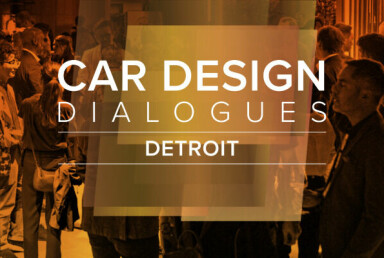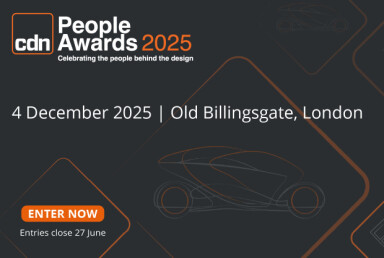Skoda Vision O concept
“Simplified, emotional but still functional” Škoda’s Oliver Stefani on the Vision O concept

Chief designer at Škoda Oliver Stefani walks Car Design News through the Vision O concept during its first UK appearance
Set inside the grand Design Museum in London, Oliver Stefani took centre stage to deliver an automotive sketching masterclass. Seated at individual desks like eager schoolchildren, members of the media poised their 2B pencils, ready to learn from the Škoda design chief himself.
The subject of the session? Škoda’s Vision O concept.
Sketching the Vision O felt fittingly full circle, as the concept began life as a “tiny sketch”, according to Stefani, which already included “most of the design cues” seen on the finished model. From this drawing, the project evolved into a fully realised concept that every Škoda designer wanted to work on, according to the chief designer.
It’s no surprise that Stefani truly believes in the power of sketching. “It’s not going out of fashion. I think for all designers, sketching is the first way to pin down the basic idea that you have. It’s the way to communicate between designers, so I can read their sketches, and they can read mine.”
Making its UK debut after the reveal in Munich, this sketch brought to life represents the next step in the Modern Solid design language. As a concept, it strives to be different, and Stefani has opted to create a sense of uniqueness by buying into the power of simplicity – evident through the lack of a crease line along the body, leaving a clean sweeping side profile.

Special effort has been put into the wheel arches to “create emotion on the surface, as well as making the plan view very attractive. It shows that with simplicity; you can have a lot of emotion,” adds Stefani.
Equipped with autonomous technology, which handles all driving tasks except in challenging weather conditions, the Vision O relies on emotion to reinforce confidence in the technology. As Stefani notes, “people buy a car with the heart.”
At the front, the tech deck face has been designed to prioritise aerodynamics while also creating brand recognition. The lighting is integrated into the air curtains that encapsulate the face, with the vertical ribs maintaining Škoda’s brand characteristics. The bonnet remains typically Škoda, with the same style being found across the range.
Looking at the rear, Stefani is quick to point out the absence of a full-width light bar, a feature currently dominating the industry. “We interrupted this with lettering because we don’t want to have a band like everybody else,” he explains.

Opening the concept, the 650-litre boot hides a bin compartment on either side and a dedicated cable bag.
Inside, access is via rear-opening suicide doors. Stefani proudly remarks that “we designed this car from the inside. We did this because we have different customer groups for this car – it’s families, businesses and people that drive long distances every day. So we wanted to make this extra comfortable for them.”
Technology inside is kept to the essentials. A rectangular horizon display going from pillar to pillar just beneath the windscreen provides key information. To change the display, there are tactile buttons (hooray!) to turn and prod. There’s also a vertical touchscreen pad on the dashboard used for navigation.

“At Škoda, we deeply believe in haptic controls, physical buttons that you can touch so you don’t have to look at where they are. It’s not a digital detox, but we wanted to reduce this, so it doesn’t dominate the car,” Stefani reflects.
Lighting plays a key role in the interior, with the concept utilising circadian lighting that naturally shifts in colour from morning to evening – “we want customers to feel relaxed while driving. We are customer centric,” he adds.
Sustainability credentials are strong, with Stefani explaining that the “Vision O comes from circularity, and I think customers expect this.” Mono-materials, which are easy to recycle, as well as already recycled materials are utilised throughout the cabin, including in the steering wheel and dashboard. The 3D knitted headrests also provide visual interest, although we suspect these may face challenges meeting safety standards if the vehicle reaches production.
Speaking of production, Stefani is clear that this is a believable vehicle but alludes to hurdles that still need to be tackled. Whatever the result, the concept has certainly proved one thing: that simplicity can stir emotion.








